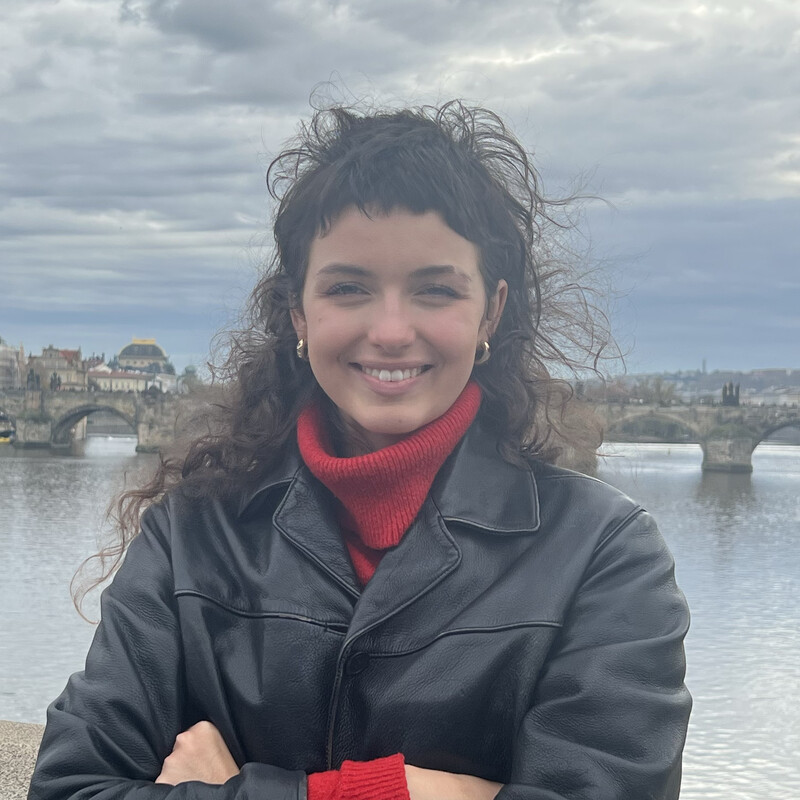WARNING
this post contains sensitive content
Today was hard.
Hundreds and hundreds of mug shots flood my mind as we bump along the rural roads in a tuk-tuk on the way home.
The tower of skulls.
The crude cells inside of a former high school.
The graffiti of people’s last words scrawled on the wall.
Today I witnessed the atrocities committed during the Khmer Rouge.
We started the day at 8 in the morning. Climbing into a 5 man tuk-tuk (which is basically a motorbike hooked onto a carriage of sorts) we made the trek to the Genocide Museum, called Tuol Sleng, which is the name of the school that it used to be.
Tuol Sleng was a high school that was taken over by Pol Pot and his communist regime when the Khmer Rouge took Phnom Penh in 1975.
1975.
Think about that for a second.
If you’re my age, your parents were in their early years around this time.
Your grandparents were in their 30s, having families and working.
While teens in our country were wearing bell bottoms and complaining about school dances, the teens in this very school, Tuol Sleng, were kicked out and forced to the countryside while their classrooms were turned into places of torture.

Cambodian people were ravaged by the side effects of the Vietnam War.
The United States dropped 2.7 million tons of bombs on Cambodia, mostly in the country. With a combination of wanting to destroy Northern Vietnam forces and relieving heavy planes of their unwanted cargo, the Cambodian people took more bombs than any other area during the Vietnam War- more than Japan during WWII.
The effect was 80% of people living in extreme poverty.
Pol Pot and his utopian dream took hold mainly in the provinces, where poor and starving illiterate people worked day and night for pennies.
Uneducated young men provided the forces for the Khmer Rouge to stock the ranks. “Cadres” or comrades, were promised prosperity, freedom, and food. Pol Pot called these people, the farmers, “old people” and pitted them against city people, or “new people” by saying that they were the enemy of the State. Enticed by the thought of a steady job and maybe a house, people took up arms and fought the imagination.
Phnom Penh fell to the regime in 1975. They forced everyone out of the city, claiming that severe bombings were coming and they could return in a few days.
People packed up their belongings, some even cleaned their houses.
Literally, millions of people on foot walked through the streets of their capital out to the surrounding fields and beyond- never to come back.
The Khmer Rouge occupied the city and it was left virtually empty for the years they ruled the country.
“New people” consisted of anyone with “soft hands,” glasses, lighter skin, a degree in the Arts or Science, or even religious affiliation. Monks, doctors, teachers, writers, and government officials were put into concentration camps.
Pol Pot was a teacher in the late 40s. He worked to improve conditions for education and worker’s rights. He was an educator only to torture and kill others like him 20 years later.
You didn’t have to be rich, acclaimed, or well-educated though. Cadre guards would determine who would go to prison and who would go to a state-run work camp by holding out simple words on a piece of paper and asking them to read it.
Those who were literate went to prison.
The most infamous prison and torture center of the Angkor regime was S21- the converted high school.
This is now the Tuol Sleng Genocide Museum.
I was wearing a skirt to my knees in preparation, but if you weren’t wearing long pants they provided some. An incredible amount of sacred respect for this place is implemented, and I’m really grateful. I wore my one-size-fits-all wrap pants happily.
The audio guide was sincere, piercing, and very Cambodian. They did not have anyone speaking English that was a native speaker. I assume this was for authenticity, but could have been from lack of any other choice. Most speakers are the survivors of S21.
There were only seven.
The grounds are deceptively peaceful.
To imagine the horrifying deeds done takes effort and deliberate thought.
Prisoners here usually had no idea why they were there.
People were taken in trucks, blindfolded, in the night so that no one would know where the camp was.
The atrocities were uncovered years after the regime toppled and leaders fessed up.
People here were clueless about conspiracy, treason, or foreign spy organizations.
They were tortured up to three times a day, in a search for information about the KGB, CIA, Vietnam government, and other threats to the Regime.
Threats that these innocent people hadn’t even heard of.

Cambodian people call this tree a “spirit tree” and believe that it collects the souls of those who died here.
As I walked through the interrogation rooms, I imagined being on one of those iron beds, being shackled for days with no food or water and only a munition box for waste. I imagined not knowing anything about the “CIA” but having it shouted in my face while electric shock, fingernail pulling, and crude tools lay waiting.
What would I have done?
I can’t really answer that, but I can tell you what these people did.
Most caught on to what they wanted and made up stories about their life, and their affiliations with various governments and agencies, and reported people they knew.
Once the information was extracted and recorded, victims were killed.

A giant beam used for exercise by the school in the 60’s was converted into “the guillotine.”
Prisoners’ hands were tied behind their backs and lifted up by a rope being pulled over the beam. They continued hanging there until they passed out and then lowered, forced into giant clay pots filled with excrement until they woke, interrogated, and hired up onto the beam again and again until the information was acquired.
Because money was scarce and ammunition was expensive, killings were often done with blunt tools and farm equipment.
Torture was systematic and developed extensively by an academic called Duch, who ran S21. Guards who let prisoners commit suicide or who accidentally killed a victim too early were stripped of their Cadre uniform and shackled in a cell themselves.
The rules of the prison camp are in bold letters written everywhere.
No 3: “Don’t be a fool for you are a chap who dares to thwart the revolution”
No. 6: “While getting lashes or electrification you must not cry at all”
and No 10: “If you disobey any point of my regulations you shall get either ten lashes or five shocks of an electric discharge.”
Duch’s crimes against humanity include pouring hot water up the nose, suffocating people over the course of days with plastic, waterboarding, beating, and live autopsies.
S21, similar to Nazi Germany, was meticulous in its record keeping.
Every prisoner was assigned a number, and every prisoner was photographed, sometimes after brutal death.
These photographs are on display all over the museum.
Many people were photographed right when they were dragged off the truck.
The photographer responsible is still alive. His name is Nhem Ein.
“Those that arrived at the facility had no chance of living. I took pictures of the prisoners just after they had a number pinned on them. The photos taken before they were interrogated or tortured…One day, I saw the face of a close relative through my camera. I kept silent even after he was taken to be interrogated and killed”
Walking through the endless faces, I tried to pay homage to their suffering.
Each face belonged to a life.
Each face belonged to other faces that loved them.
Another one of Pol Pot’s slogans was “Pull up the grass by its roots.”
This inaction meant killing off everyone in a family, so no one was left to come to take revenge or be an enemy of the revolution.
Children were not spared, and their faces are among the thousands in this memorial.
Close to 20,000 people came through S21.
At one point it kept 12,000 people.
Imagine a school meant for around 2,000 students or so crammed with 12,000 terrified and naked prisoners.

This place is the ultimate irony and represents the tragedy of totalitarian rule.
The cheery yellow and white checkered tiles meant for a place of community, socialization, and learning are now stained with blood and chemicals.
Chalkboards, once for writing trigonometry and language, now stare blankly among the crude prison cells erected in the classrooms.
Education was replaced with torture and death.
This was the necessary evil to create a new state.
This was the way to “smash and destroy the traitors to Angkor.”
Prisoners were shackled in the crude, rough cells by iron ankle bars.
If they moved in the night and rattled, they would be beaten, sometimes for the whole night.
One prisoner reported that after 12 days of beatings, his back was so swollen he could not lay on it.
He moved to lay on his stomach.
The chain rattled against the tile.
He was beaten until his back broke.
He was killed a week later at the killing fields.
There are many stories like this.
Millions.
3 million people died, and it is estimated that more than 20,000 were tortured and killed at Tuol Sleng.

A chalkboard with the preserved remains of a math equation in cell block No. 3
Because they required written confession, historians have been able to extract many of their stories from the kept records.
Some would hide their story in code within the confession, hoping that someone would later find it.
Bophana is famous for having the longest confession in the history of S21.
After being transferred to the countryside, where she was discriminated against because of her light skin and beauty, she was captured after being caught with “private correspondence” (a love letter to her husband).
She was taken from her husband, the love of her life, and imprisoned and tortured.
Within her 60-page confession is the story of how they met, how they fell in love, and her last message to him, all within the code of a mix of English and French.
Amidst the lies of her affiliation with espionage and treason is her final hope of communication.
She did not know he had arrived at S21 a month before.

I’m sure that many thought someone would come for them.
I’m sure that they did their best to hold on to hope.
The most heartbreaking part of this visit for me was the upper rooms in building D: the archives.
Here are the documents of confessions and stories.
In a project conducted in 2007, historians and researchers set out to photograph all the graffiti in the school/prison.
The result is a binder full of photographs with their translation/transcription written on the back.
As I flipped through and read I was overwhelmed by the reality of these people and their situation.
They were given numbers, but they had names.
They had families.
They had professions.
They had lives filled with holidays, children, and friends.
For some of them, these scratchings on the wall were their last words.
A last poem.
A formula for trigonometric equations.
A message for a family member.
A drawing, maybe a whisper of their old life.

It is this humanity that we must hold onto, for if it is sacrificed for the better of anything else, we know we have failed.
“Good bye my life, this, Sam Chhat, was imprisoned 1st August 1977 I lost my husband and children, as a bird is losing it’s nest”










